Science News
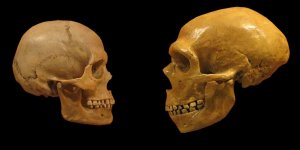
In recent years, scientists have uncovered evidence that Neanderthals and modern humans interbred. Previous research has shown that Neanderthals who were connected to the Vindija Cave in modern-day Croatia contributed DNA to modern-day Eurasian populations. »
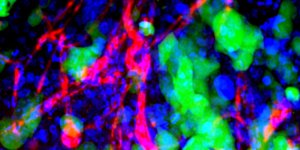
Disabling key enzymes overcomes previous limitations to blocking angiogenesis, may inform cancer treatment strategies. »
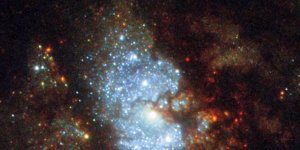
Less than a second after the Big Bang, the universe suddenly blew up from almost nothing to a hot, dense sea of neutrons and electrons stretching across trillions of light years. »

Scientists at Caltech and Occidental College have discovered a methane-fueled symbiosis between worms and bacteria at the bottom of the sea, shedding new light on the ecology of deep-sea environments. »

Scientist talks about social distancing strategies and how long we may need to maintain them. »

A protein that normally deposits mineralized calcium in tooth enamel may also be responsible for calcium deposits in the back of the eye in people with dry age-related macular degeneration (AMD). »

An international research team has obtained new measurements of how big neutron stars are. »
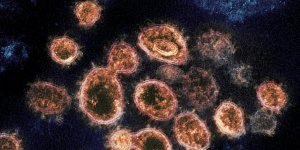
A new app, which will be used to collect data to develop machine learning algorithms that could automatically detect whether a person is suffering from COVID-19 based on the sound of their voice, their breathing and coughing, has been launched by researchers at the University of Cambridge. »
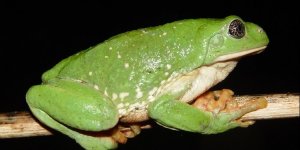
Plants, animals remarkably similar in their responses to changing environmental conditions. »

Biochemist leads simulations to help design new drugs, vaccines to combat coronavirus. »

The latest studies of the archaeological site at Orce (Granada) reveal that the earliest settlers of the European continent, some 1.4 million years ago, developed innovative techniques that were not used again until 400,000 years later. »

Engineers at Caltech have shown that atoms in optical cavities -- tiny boxes for light -- could lead to the creation of a quantum internet. »
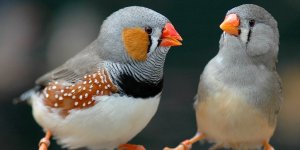
An international team of researchers has successfully sequenced a chromosome of the Zebra Finch that is only found in the germline cells, which are generated when the songbirds are reproductively active. »
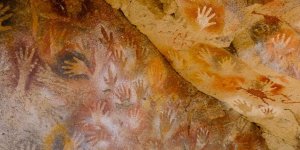
A new study has provided the most comprehensive analysis of human genetic diversity to date, clarifying the genetic relationships between human populations around the world. »

The ice giant Uranus appears to be losing a bit of its atmosphere to space, perhaps siphoned away by the planet's magnetic field. »

Handwashing is a crucial coronavirus defence strategy, but millions of the world’s most vulnerable people have no access to water. »

Researchers are developing cotton thread-based colorimetric microfluidic devices. »

The Earth of 3.2 billion years ago was a "water world" of submerged continents, geologists say, after analyzing oxygen isotope data from ancient ocean crust now exposed on land in Australia. The finding could have major implications for the origin of life on Earth. »

New biofilm extends the shelf life of eggs and protects them against fungi and bacteria. »

Agricultural Research Service researchers have shown some freeze-dried berry powders—especially freeze-dried strawberry powder—can act as outstanding stabilizers in ice cream and other frozen dairy desserts. »

Researchers estimate the loss of plants and animals by 2070. »

A simple, portable test that can detect the deadliest of the mushroom poisons in minutes has been developed by Agricultural Research Service (ARS) scientists and their colleagues. »

Researchers from the University of Granada have investigated the daily changes in the expression of the so-called ‘clock genes’ (which regulate every cell in the body) among sepsis patients. »

Even though they are inanimate objects, sand dunes can ‘communicate’ with each other, researchers have found. A team from the University of Cambridge has found that as they move, sand dunes interact with and repel their downstream neighbours. »

Using NASA's Hubble Space Telescope and a new observing technique, astronomers have found that dark matter forms much smaller clumps than previously known. This result confirms one of the fundamental predictions of the widely accepted "cold dark matter" theory. »

Scientists from the multidisciplinary research group ECsens of the University of Granada (UGR) have developed and tested a new system that enables a large number of chemical analysis techniques to be performed in situ, using a smartphone. »

More microbes found on healthier Cuban reefs than on human-impacted Florida reefs. »

Ancient past as important as current climate and human impacts in explaining biodiversity patterns. »

One of the brightest and most massive star-forming regions in our galaxy, the Omega, or Swan, Nebula, came to resemble the shape resembling a swan's neck we see today only relatively recently. »

Some lizards have unique airflow pattern: hybrid of birds and mammals. »

Researchers at the University of Granada have analysed for the first time the link between sedentary time vs. objectively-measured physical activity levels and systemic concentrations of glycaemic, lipid, and inflammatory markers among pregnant women. »

Smoke particles from the fires ravaging Australia have traveled more than 12,000 km, crossed an ocean and a mountain range and arrived in South America, meteorological institutions confirmed, after smoke was detected in Chile, Argentina, Brazil and Uruguay. »

The mysterious disappearance of Greenland’s Norse colonies sometime in the 15th century may have been down to the overexploitation of walrus populations for their tusks, according to a study of medieval artefacts from across Europe. »

Scientists managed to instantly “teleport” data between two chips that are not connected for the very first time. »

Blue pigment discoverer makes key design advance for future durable, vivid pigments. »

Pregnant women exposed to persistent organic pollutants, or POPs, had slightly smaller fetuses than women who haven’t been exposed to these chemicals, according to an analysis of ultrasound scans by researchers at the National Institutes of Health and other institutions. »

NASA’s Fermi Gamma-ray Space Telescope has discovered a faint but sprawling glow of high-energy light around a nearby pulsar. If visible to the human eye, this gamma-ray “halo” would appear about 40 times bigger in the sky than a full Moon. »

Australian scientists have successfully blocked the deadliest malaria parasite —- Plasmodium falciparum — in its transmission stage, paving the way for developing preventative therapies to stop the spread of the disease. »

An international joint research team led by NIMS succeeded in fabricating a neuromorphic network composed of numerous metallic nanowires. »

Algorithm deciphers human microbiome's workings. »

Over the last 20 years, three families have been unsuspectingly linked by an unknown illness. Researchers have now identified the cause of the illness, a new disease called CRIA syndrome. »

A single drop of seawater can contain a wide representation of ocean microbes from around the world -- revealing new insights into the ecology, evolution and biotechnology potential of the global microbiome. »

Researchers have developed a self-cleaning plastic wrap that repels bacteria -- and could be used to prevent the transfer of antibiotic resistant superbugs, and other forms of dangerous bacteria. »

Material combines strengths of individual components for a single system capable of rapid shape changes. »

Researchers have found that phosphine could be a pure biosignature and a sign of life where life forms don't require oxygen to thrive. »

After six years of research, Brazilian scientists have discovered that the presence of the Leishmania RNA virus in disease-carrying parasites leads to more aggressive forms of leishmaniasis. »

India needs region-specific anti-venoms to deal with a large variety of venomous snakes in order to reduce death and morbidity from snakebite, says a new study. »

A new report from the National Toxicology Program suggests that traffic-related air pollution increases a pregnant woman’s risk for dangerous increases in blood pressure, known as hypertension. »

Researchers have used sophisticated models to estimate the mass of the Milky Way to be 890 billion times that of our sun. »
